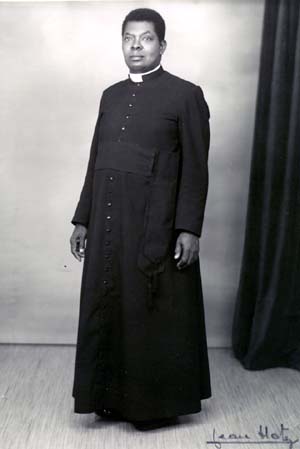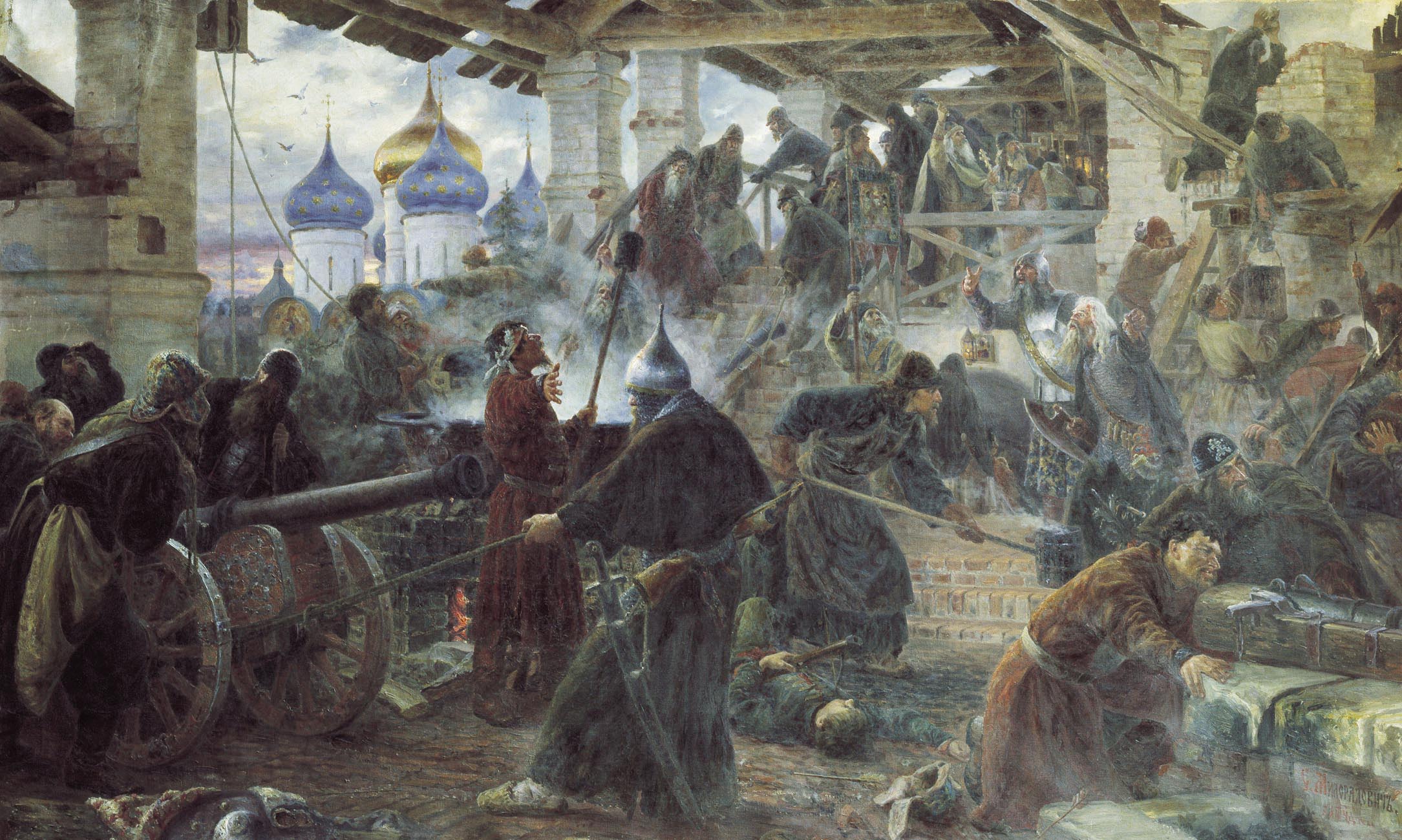|
Kliros
The kliros (Greek language, Greek: κλῆρος ''klēros'', plural κλῆροι ''klēroi''; Church Slavonic, Slavonic: клиросъ, "kliros" or sometimes крилосъ, "krilos") is the section of an Eastern Orthodox, Armenian Apostolic Church, Armenian, or Eastern Catholic Churches, Eastern Catholic church dedicated to the choir. It refers both to the general space in which Cantor (church), chanters or singers assemble for the services, as well as to the actual music stand or shelves on which music is stored and read. Overview The name derives from the Greek word for "Sortition, lot", since originally those who read and sang were chosen by lot. Historically, in cathedrals, monasteries and larger establishments such as chapels belonging to seminaries and major parishes, there would have been kliroi on both right and left sides of the church. The result is two choirs which sing antiphonally, much as monastic and cathedral choirs of the Western Churches still have today. ... [...More Info...] [...Related Items...] OR: [Wikipedia] [Google] [Baidu] |
Choir Loft
A choir, also sometimes called quire, is the area of a church (building), church or cathedral that provides seating for the clergy and church choir. It is in the western part of the chancel, between the nave and the Sanctuary#Sanctuary as area around the altar, sanctuary, which houses the altar and Church tabernacle. In larger medieval churches it contained choir-stalls, seating aligned with the side of the church, so at right-angles to the seating for the congregation in the nave. Smaller medieval churches may not have a choir in the architectural sense at all, and they are often lacking in churches built by all denominations after the Protestant Reformation, though the Gothic Revival revived them as a distinct feature. As an architectural term "choir" remains distinct from the actual location of any singing choir – these may be located in various places, and often sing from a choir-loft, often over the door at the liturgical western end. In modern churches, the choir may be l ... [...More Info...] [...Related Items...] OR: [Wikipedia] [Google] [Baidu] |
Patriarchate Constantinopolis
Patriarchate (, ; , ''patriarcheîon'') is an ecclesiological term in Christianity, referring to the office and jurisdiction of a patriarch. According to Christian tradition, three patriarchates—Rome, Antioch, and Alexandria—were established by the apostles as apostolic sees in the 1st century. These were officially recognized by the First Council of Nicaea. The Patriarchate of Constantinople was added in the 4th century, and the Patriarchate of Jerusalem followed in the 5th century. These five sees were later recognized collectively as the pentarchy by the Council of Chalcedon in 451. Over the course of Christian history, additional patriarchates were gradually recognized by the original ancient episcopal sees. However, several of these later lost jurisdiction—primarily due to the Islamic conquests in the Middle East and North Africa—and became titular or honorary patriarchates without real institutional authority over their historical territories. History As C ... [...More Info...] [...Related Items...] OR: [Wikipedia] [Google] [Baidu] |
Byzantine
The Byzantine Empire, also known as the Eastern Roman Empire, was the continuation of the Roman Empire centred on Constantinople during late antiquity and the Middle Ages. Having survived the events that caused the fall of the Western Roman Empire in the 5th centuryAD, it endured until the fall of Constantinople to the Ottoman Empire in 1453. The term 'Byzantine Empire' was coined only after its demise; its citizens used the term 'Roman Empire' and called themselves 'Romans'. During the early centuries of the Roman Empire, the western provinces were Latinised, but the eastern parts kept their Hellenistic culture. Constantine I () legalised Christianity and moved the capital to Constantinople. Theodosius I () made Christianity the state religion and Greek gradually replaced Latin for official use. The empire adopted a defensive strategy and, throughout its remaining history, experienced recurring cycles of decline and recovery. It reached its greatest extent un ... [...More Info...] [...Related Items...] OR: [Wikipedia] [Google] [Baidu] |
Stikharion
The sticharion (also ''stikharion'' or ''stichar''; Greek: στιχάριον; Slavonic: Стиха́рь - Stikhár’) is a liturgical vestment of the Eastern Orthodox and Eastern Catholic Churches, roughly analogous in function to the alb of the Western Church. The sticharion is worn by all classes of ordained ministers in the Constantinopolitan Rite and comes in two forms: one worn by priests and one worn by deacons and other altar servers. The sticharion is derived from the ''chiton'', a long, sleeved garment which reached to the ground and was worn in ancient times by both men and women. Deacons and Servers In the form worn by deacons, subdeacons, altar servers, and sometimes by readers, the sticharion is a long robe with wide, loose sleeves, fastened at the neck, and often open down the sides but held shut with buttons or ties. Thus in form, it is close to the dalmatic and tunicle of Western Christianity. There is usually a cross embroidered or appliquéd to the center o ... [...More Info...] [...Related Items...] OR: [Wikipedia] [Google] [Baidu] |
Riassa
The cassock, or soutane, is a Christian clerical coat used by the clergy and male religious of the Oriental Orthodox Churches, Eastern Orthodox Church and the Catholic Church, in addition to some clergy in certain Protestant denominations such as Anglicans and Lutherans. "Ankle-length garment" is the literal meaning of the corresponding Latin term, . It is related to the habits traditionally worn by ... traditionally worn by nun">... traditionally worn by nuns, monk">nun">... traditionally worn by nuns, monks, and friars. The cassock derives historically from the tunic">nuns, monks, and friar">nuns, monk">nun">... traditionally worn by nuns, monks, and friars. The cassock derives historically from the tunic of classical antiquity that in ancient Rome was worn underneath the toga, and the Chiton (garment), chiton that was worn beneath the himation in ancient Greece. In religious services, it has traditionally been worn underneath vestments, such as the alb. In the West, ... [...More Info...] [...Related Items...] OR: [Wikipedia] [Google] [Baidu] |
Russian Orthodox
The Russian Orthodox Church (ROC; ;), also officially known as the Moscow Patriarchate (), is an autocephaly, autocephalous Eastern Orthodox Church, Eastern Orthodox Christian church. It has 194 dioceses inside Russia. The Primate (bishop), primate of the ROC is the patriarch of Moscow and all Rus'. The History of the Russian Orthodox Church, history of the ROC begins with the Christianization of Kievan Rus', which commenced in 988 with the baptism of Vladimir the Great and his subjects by the clergy of the Ecumenical Patriarch of Constantinople, ecumenical patriarch of Constantinople. Starting in the 14th century, Moscow served as the primary residence of the Russian List of metropolitans and patriarchs of Moscow, metropolitan. The ROC declared autocephaly in 1448 when it elected its own metropolitan. In 1589, the metropolitan was elevated to the position of patriarch with the consent of Constantinople. In the mid-17th century, a series of reforms led to Schism of the Russian ... [...More Info...] [...Related Items...] OR: [Wikipedia] [Google] [Baidu] |
Greek Orthodox
Greek Orthodox Church (, , ) is a term that can refer to any one of three classes of Christian Churches, each associated in some way with Greek Christianity, Levantine Arabic-speaking Christians or more broadly the rite used in the Eastern Roman Empire. * The broader meaning refers to "the entire body of Orthodox (Chalcedonian) Christianity, sometimes also called 'Eastern Orthodox', 'Greek Catholic', or generally 'the Greek Church. * A second, narrower meaning refers to "any of several independent churches within the worldwide communion of (Eastern) Orthodox Christianity that retain the use of the Greek language in formal ecclesiastical settings". In this sense, the Greek Orthodox Churches are the Ecumenical Patriarchate of Constantinople and its dependencies, the Patriarchates of Alexandria, Antioch and Jerusalem, the Church of Greece and the Church of Cyprus. * The third meaning refers to the Church of Greece, an Eastern Orthodox Church operating within the modern bor ... [...More Info...] [...Related Items...] OR: [Wikipedia] [Google] [Baidu] |
Russian Orthodox Church
The Russian Orthodox Church (ROC; ;), also officially known as the Moscow Patriarchate (), is an autocephaly, autocephalous Eastern Orthodox Church, Eastern Orthodox Christian church. It has 194 dioceses inside Russia. The Primate (bishop), primate of the ROC is the patriarch of Moscow and all Rus'. The History of the Russian Orthodox Church, history of the ROC begins with the Christianization of Kievan Rus', which commenced in 988 with the baptism of Vladimir the Great and his subjects by the clergy of the Ecumenical Patriarch of Constantinople, ecumenical patriarch of Constantinople. Starting in the 14th century, Moscow served as the primary residence of the Russian List of metropolitans and patriarchs of Moscow, metropolitan. The ROC declared autocephaly in 1448 when it elected its own metropolitan. In 1589, the metropolitan was elevated to the position of patriarch with the consent of Constantinople. In the mid-17th century, a series of reforms led to Schism of the Russian ... [...More Info...] [...Related Items...] OR: [Wikipedia] [Google] [Baidu] |
Iconostasis
In Eastern Christianity, an iconostasis () is a wall of icons and religious paintings, separating the nave from the sanctuary in a Church (building), church. ''Iconostasis'' also refers to a portable icon stand that can be placed anywhere within a church. The iconostasis evolved from the Byzantine architecture, Byzantine templon, a process complete by the 15th century. A direct comparison for the function of the main iconostasis can be made to the layout of the great Temple in Jerusalem. That Temple was designed with three parts. The holiest and inner-most portion was that where the Ark of the Covenant was kept. This portion, the Holy of Holies, was separated from the second larger part of the building's interior by a curtain, the parochet , "veil of the temple". Only the High Priest (Judaism), High Priest was allowed to enter the Holy of Holies. The third part was the entrance court. This architectural tradition for the two main parts can be seen carried forward in Christian ... [...More Info...] [...Related Items...] OR: [Wikipedia] [Google] [Baidu] |
Prodromou2
Prodromou () is a Greek surname. It is the genitive form of prodromos (), which means forerunner. Notable people with this surname include: * Evan Prodromou (born 1968), American software developer * Andreas Prodromou, flight attendant in the Helios Airways Flight 522 Helios Airways Flight 522 was a scheduled passenger flight from Larnaca, Cyprus, to Prague, Czech Republic, with a stopover in Athens, Greece, operated by a Boeing 737-300. Shortly after takeoff on 14 August 2005, Nicosia air traffic control (AT ... accident * Peter Prodromou (born 1969), British engineer * Stav Prodromou (born 1944), Greek businessman References {{surname ... [...More Info...] [...Related Items...] OR: [Wikipedia] [Google] [Baidu] |
Byzantine Rite
The Byzantine Rite, also known as the Greek Rite or the Rite of Constantinople, is a liturgical rite that is identified with the wide range of cultural, devotional, and canonical practices that developed in the Eastern Christianity, Eastern Christian church of Constantinople. The canonical hours are extended and complex, lasting about eight hours (longer during Great Lent) but are abridged outside of large Monastery, monasteries. An iconostasis, a partition covered with icons, separates Sanctuary#Sanctuary as area around the altar, the area around the altar from the nave. The Sign of the cross#Eastern Orthodoxy, sign of the cross, accompanied by bowing, is made very frequently, e.g., more than a hundred times during the Divine Liturgy#Byzantine Rite, divine liturgy, and there is prominent veneration of icons, a general acceptance of the congregants freely moving within the church and interacting with each other, and distinctive traditions of liturgical chanting. Some traditional ... [...More Info...] [...Related Items...] OR: [Wikipedia] [Google] [Baidu] |






